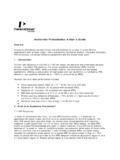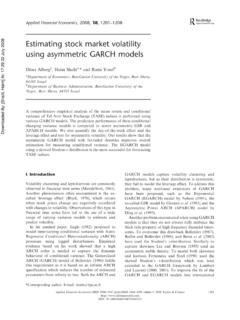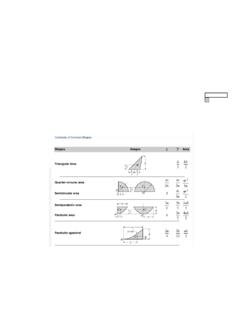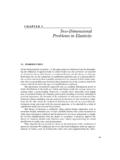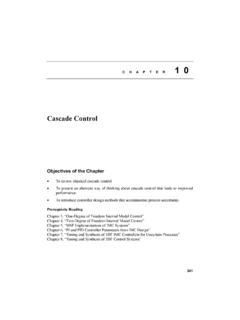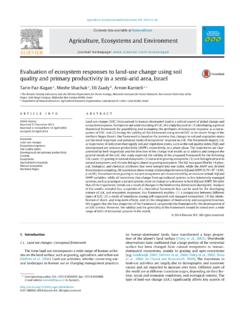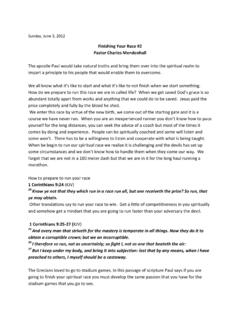Transcription of CA THERINE R OTTENBERG Passing: Race, …
1 CATHERINEROTTENBERGP assing:Race, Identification, and DesireIN THE SECOND HALFof the nineteenth century, African-American writers suchas William Wells Brown and Frances Harper began invoking the phenomenonof passing in their texts as a way of investigating the complexities and contra-dictions of the category of race in the United light-enough-to-passNegro (but usually Negress) would play a central role in the imagination ofAfrican-American writers for the nextfifty years. Charles Chesnutt sThe Housebehind the Cedars,Jessie Faucet sPlum Bum,and James Weldon Johnson sTheAutobiography of an Ex-Coloured Manare perhaps the best-known Larsen s 1929 novella, passing ,the text under discussion in this essay,can thus be seen as inheritor and perpetuator of a long tradition of such narra-tives.
2 In recent years, Larsen s text has become the most celebrated instance ofa story about passing in African-American literature, eclipsing the traditionthat preceded it. This is not coincidental, for Larsen is a master of ambiguityand intrigue, and the enigmaticfinale of her novella has generated heated de-bates and countless analyses have attempted to determine whether or not Larsen s useof passing can be seen as a subversive strategy,2that is, whether the narrativeserves to reinforce hegemonic norms of race or whether it ultimately positspassing as a viable survival strategy, which has the potential to disrupt theenclosures of a unitary identity.
3 3 While this question still informs several cri-tiques, in the past few years commentators have been concentrating more andmore on how passing interrogates and problematizes the ontology of identitycategories and their construction. Rather than trying to place passing in a sub-versive/recuperative binary, these articles and books use passing as a point ofentry into questions of identity and identity categories more this essay I contend that Larsen s text can assist critics in understandingthe specific and, as I will argue,irreduciblefeatures of race is, the novella can help us begin mapping out the differences betweengender and race norms since it uncovers the way in which regulatory ideals ofCriticism,Fall 2003, Vol.
4 45, No. 4, pp. 435 52 Copyright 2004 Wayne State University Press, Detroit, MI 10704$$CH304-27-04 14:56:56PS436 Catherine Rottenbergrace produce a specific modality of especially condu-cive to interrogating the modality of race performativity because, unlike otherpassing narratives of the period, Larsen spresentsuswithtwoprotagonistswho can pass for white; yet only Clare passes over into the white world. Thedepiction and juxtaposition of these two characters reveal the complexitiesand intricacies of the category of race. While Irene can be seen to representthe subject who appropriates and internalizes the hegemonic norms of Race, Clare s trajectory dramatizes how dominant norms can be misappropriatedand how disidentification is always essay commences with a theoretical discussion of race.
5 Althoughmuch has been written on the constructed nature of the category of race, veryfew analyses have offered a convincing and rigorous account of how racemight be conceived of as performative reiteration. The second section offers areading of passing scenes from the novella in an attempt to unravel some ofthe distinctive mechanisms through which race norms operate. On the onehand, the novella suggests that race in the United States operates through aneconomy of optics, andthe assumption of whitenessis one of the consequencesof this economy. On the other hand, the novella reveals that skin color ( ,optics) does not really constitute the truth of Homi Bhabha s notion of mimicry as a supplement to Butler sconcept of gender performativity in the third section, I interrogate and theo-rize the ways in which the definitional contradiction of race ( can be seen versus cannot be seen ) produces race as performative reiteration.
6 Whilethere are two idealized genders under regimes of compulsory heterosexuality,albeit with a very great power differential between them, there has historicallybeen only one hegemonic and ideal race under racist difference,I argue, has far-reaching implications, one of which is the need to rethink thedesire/identification nexus, a nexus that operates differently in race and ingender. Understanding the particular relationship between desire and identi-fication in the novella also helps us begin to gauge the critical question of least one clarification is needed at this point, however. This essay fo-cuses on the ways in which power in the Foucauldian and Butlerian sense operates on the hegemonic level and does not make a claim about themultiplicity of social practices per se.
7 Hegemony, though, as we will see in thelast section, is never complete, indicating that there are always counter-discourses and alternative norms circulating within any given Race as Performative RepetitionIn Race as a Kind of Speech Act, Louis Miron and Jonathan Inda arguethat race does not refer to a pre-given subject. Rather, it works 10704$$CH304-27-04 14:56:57 PSPassing:Race, Identification, and Desire437to constitute the subject itself and only acquires a naturalized effect throughrepeated or reiterative naming of or reference to that subject. 7 The norms thatconstitute the symbolic order and create the grid of intelligibility are pro-duced and circulated by the relations of power existing within a given a white supremacist society, for example, norms work by constructing a bi-nary opposition between white and black (or nonwhite) in which white is al-ways privileged over are thus interpellated into the symbolicorder as gendered and raced beings and are recognizable only in reference tothe existing grid of intelligibility.
8 For Miron and Inda, the interpellation Look,a Negro, famously addressed by Frantz Fanon, is parallel to It s a girl! 9 Andonce interpellated, subjects must, in turn, incessantly cite and mime the veryrace norms that created their intelligibility (and thus their condition of possi-bility) in thefirst place. In short, according to Miron and Inda, race performa-tivity is the power of discourse to bring about what it names through the citingor repetition of racial two critics cogently point out that norms or regulatory ideals whichconstitute and make social practices possible are produced through an artifi-cial unity composed of a series of disparate attributes: Physical features,namely skin color, are linked to attributes of intellect and behavior, establish-ing a hierarchy of quality between white and black.
9 10 The concept of race, likegender, does not denote a natural phenomenon, but rather groups togetherattributes which do not have a necessary or natural relationship to one anotherin order to enable one to make use of thisfictitious unity as a causal principle,an omnipresent meaning. 11 Accordingly, a series of traits linked to whiteness(civilized/intelligent/moral/ha rdworking/clean) and blackness (savage/instinc-tual/simple/licentious/l azy/dirty) have been concatenated in the service of spe-cific social ,Clare recounts how her white aunts, whotook her in after her father died, thought that hard labor would be good forher: I had Negro blood and they belonged to the generation that had writtenand read long articles headed: Will the Blacks Work?
10 13 The lazy blackworker has a long history in American race Bellew, Clare sracist husband, also invokes and reiterates this kind of discourse when he tellsIrene that black people are always robbing and killing. And .. worse (172).Insofar as the performative repetition of norms is the condition of possibilityfor viable subjects, race performativity compels subjects to perform accordingto these fictitious unities, thus shaping their identity and their is, indeed, one of the most fundamental manifestations of theFoucauldian notion of positive Race as a Kind of Speech Act is one of the few articles that offersa sustained and rigorous theoretical analysis of the way in which race is sub-tended by performativity, I have serious misgivings about the simple transpo-sition of Butler s notion of gender performativity onto race.

